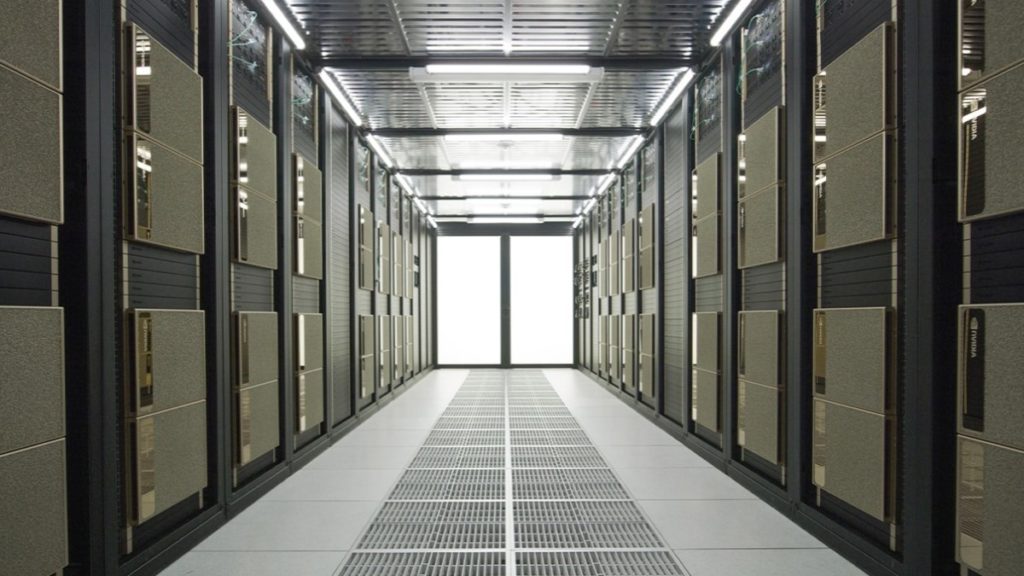
The NVIDIA Eos is an AI supercomputer comprised of 576 NVIDIA DGX H100 systems in a large-scale enterprise DGX SuperPOD. The NVIDIA Eos is named in honor of the Greek goddess of the dawn who opened the gates of dawn to advance each day’s beginning. NVIDIA says that its supercomputer reflects its commitment to advancing AI technology. As of November 2023, Eos holds the number nine spot in the TOP500 list of the world’s fastest computers. NVIDIA refers to Eos as an “AI Factory” or “purpose-built AI engine” that can build AI models to scale.
Per NVIDIA:
“The architecture is built to provide the AI and computing fields with tightly integrated full-stack systems capable of computing at an enormous scale.”
NVIDIA has said that Eos is where developers can work on AI projects such as large-scale language training models, quantum solutions, and more to make breakthroughs in AI research. Each DGX H100 system houses eight H100 Tensor Core GPUs and at 576 systems comes to a total of 4,608 H100 GPUs. With these Eos is capable of up to 18.4 exaflops of FP8 AI performance and, by using NVIDIA’s Quantum-2 Infiniband networking solution, it can reach data transfer speeds of up to 400 Gb/s.
Eos Description (per blog page):
“Eos’s architecture is optimized for AI workloads demanding ultra-low-latency and high-throughput interconnectivity across a large cluster of accelerated computing nodes, making it an ideal solution for enterprises looking to scale their AI capabilities.
Based on NVIDIA Quantum-2 InfiniBand with In-Network Computing technology, its network architecture supports data transfer speeds of up to 400Gb/s, facilitating the rapid movement of large datasets essential for training complex AI models.
At the heart of Eos lies the groundbreaking DGX SuperPOD architecture powered by NVIDIA’s DGX H100 systems.
The architecture is built to provide the AI and computing fields with tightly integrated full-stack systems capable of computing at an enormous scale.”
